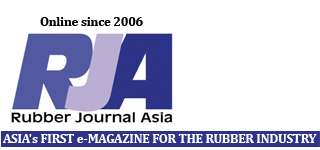Malaysia may be home to the world’s top two glove makers, but Top Glove Corp Bhd founder and chairman Tan Sri Lim Wee Chai (pix) has cautioned against taking its position for granted.
Malaysia is the world’s largest producing country of rubber gloves, exporting 96 billion pieces a year to meet 60%- 65% of global demand.
While many are not aware of Malaysia’s pole position, it cannot be denied that its status is even more precious today, given the fact that Indonesia has in recent years displaced Malaysia as the world’s market leader in palm oil production.
Lim said reaching the top has challenging, but staying there is even harder, cautioning that the number one position is not for forever in any industry.
“We should not take our position as the world’s biggest producer for granted. Competition is rife and the number one position can be precarious,” he told SunBiz in an email interview.
To maintain Malaysia’s pole position in this industry, Lim said, local rubber glove makers must continually improve and innovate.
“The rubber glove industry is a pillar of strength for the Malaysian economy and a key contributor to the country’s GDP. It has emerged as one of few industries in which we can lay claim to being the world’s largest, a source of great pride to the nation,” he added.
Government assistance is important to ensure a conducive business environment, Lim said, while the private and the government sectors should work hand in hand to maintain the market competence of local rubber gloves industry on a global level.
The ease of obtaining permits for business expansion is necessary, he said, adding that the tax incentives for the rubber glove manufacturers to expand their business, as well as a competitive tax rate compared with other countries within the region, can be equally crucial too.
For the local glove makers, the government’s unpopular decision to raise power tariff is one of their major challenges this year. Through the Malaysian Rubber Glove Manufacturers Association (Margma) and the Federation of Malaysian Manufacturers (FMM), industry players had appealed to the government to halve its electricity rate hike for industrial users to an average 8% instead of the proposed 16.85%.
Lim, who is also the vice president of FMM, has since accepted the reality of the hike which took effect on Jan 1 this year, and Top Glove has raised the selling prices of its gloves.
“We will continue to highlight the need for more government support whenever we have the opportunity to meet with them,” he said.
Going forward, Lim opined that a move towards automation is an important step for Malaysia to continue championing the rubber glove industry.
“Automation is essential to leverage on the latest technology available to render operations more efficient. This can also mitigate the impact of the minimum wage policy as well as minimise human error,” he said.
Commenting on the industry’s outlook this year, Lim said the challenges on the domestic front include the electricity tariff hike as well as the inflationary effects which follow suit.
However, he said opportunities are still abound as global demand for rubber gloves both from developed and emerging markets remainS on the uptrend and is expected to continue growing at 8% to 10% every year.
“The local industry still has a bright future, as rubber gloves are an indispensable item in the healthcare sector and, moreover, the demand is recurring as they are disposable,” said Lim.
He further said that the usage of rubber gloves is projected to increase as hygiene standards and healthcare awareness continue to rise, particularly in developing countries.
According to Lim, Top Glove has a strong exposure in the hospital market segment, with 80% of its gloves being manufactured for the healthcare sector.
Geographically, the US and Europe with only 11% of the world population accounted for 68% of global glove usage in 2009. In contrast, the other regions with 89% of the world population accounted for only 32% of global glove usage, indicating that there is much room for growth in emerging markets.
“We expect steady demand to continue from the developed regions like US and Europe. At the same time, we believe prospects in emerging economies such as those in Asia are especially promising and look forward to seeing rapid growth in these countries where awareness and hygiene standards are on the rise,” Lim concluded.

